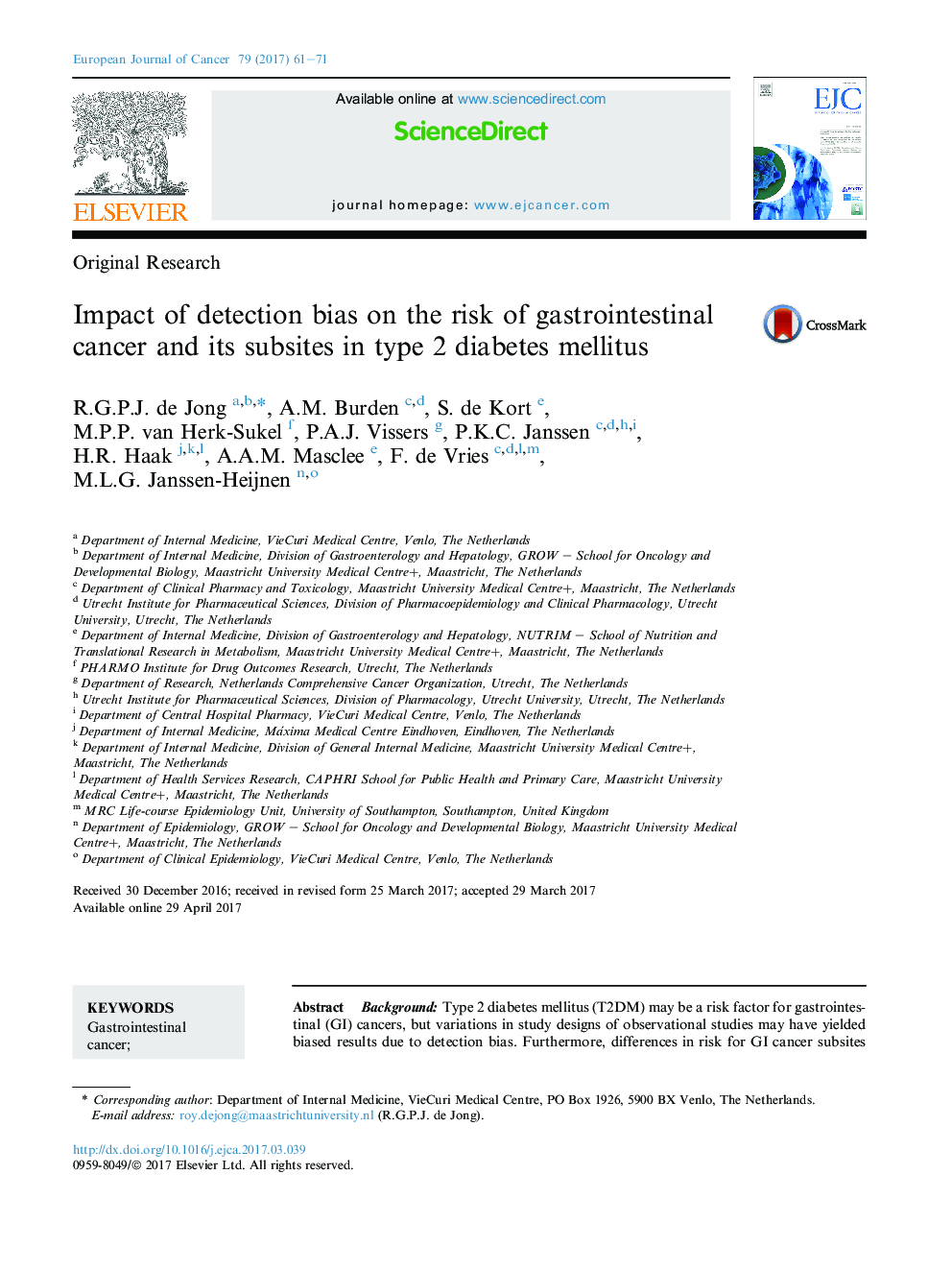| کد مقاله | کد نشریه | سال انتشار | مقاله انگلیسی | نسخه تمام متن |
|---|---|---|---|---|
| 5526659 | 1547053 | 2017 | 11 صفحه PDF | دانلود رایگان |
- Type 2 diabetes mellitus patients had a 40% increased risk of gastrointestinal cancer.
- Increased gastrointestinal cancer risks tended to be weaker when reducing detection bias by applying a 1-year lag-period.
- Future observational studies should therefore include sensitivity analyses in which this bias is minimised.
BackgroundType 2 diabetes mellitus (T2DM) may be a risk factor for gastrointestinal (GI) cancers, but variations in study designs of observational studies may have yielded biased results due to detection bias. Furthermore, differences in risk for GI cancer subsites have not been extensively evaluated. We aimed to determine the risk of GI cancer and its subsites in patients with T2DM and how it is affected by detection bias.MethodsA matched cohort study was performed using the NCR-PHARMO database. New-users of â¥1 non-insulin anti-diabetic drug during 1998-2011 were matched with non-diabetic controls by year of birth, sex, and time between database entry and index. Cox regression analyses were performed with and without lag-period to estimate hazard ratios (HRs) for GI cancer and its subsites. Covariables included age, sex, use of other drugs and history of hospitalisation.ResultsAn increased risk of GI cancer was observed in T2DM patients (HR 1.5, 95% confidence interval [CI] 1.3-1.7) compared with controls, which was attenuated in the 1-year lagged analysis (HR 1.4, 95% CI 1.2-1.7). Stratified by subsite, statistically significant increased risks of pancreatic (HR 4.7, 95% CI 3.1-7.2), extrahepatic bile duct (HR 4.2, 95% CI 1.5-11.8) and distal colon cancer (HR 1.5, 95% CI 1.1-2.1) were found, which remained statistically significantly increased in the lagged analysis.ConclusionsT2DM patients had a 40% increased risk of GI cancer. Increased GI cancer risks tended to be weaker when reducing detection bias by applying a 1-year lag-period. Future observational studies should therefore include sensitivity analyses in which this bias is minimised.
Journal: European Journal of Cancer - Volume 79, July 2017, Pages 61-71
